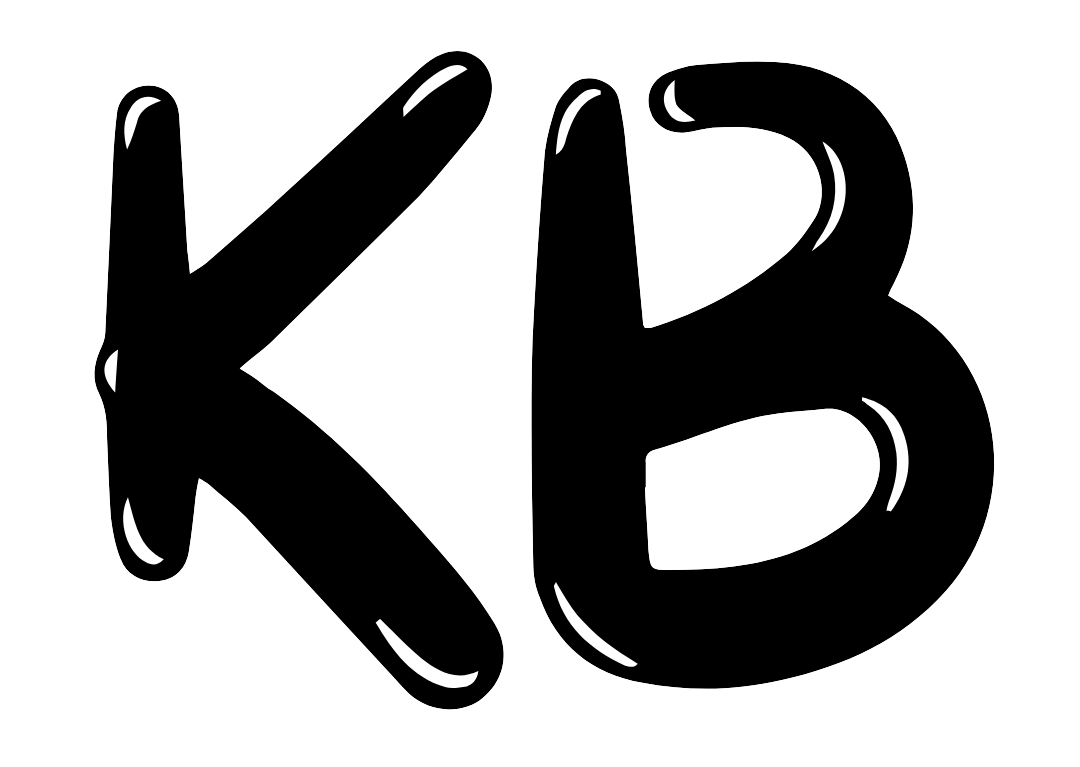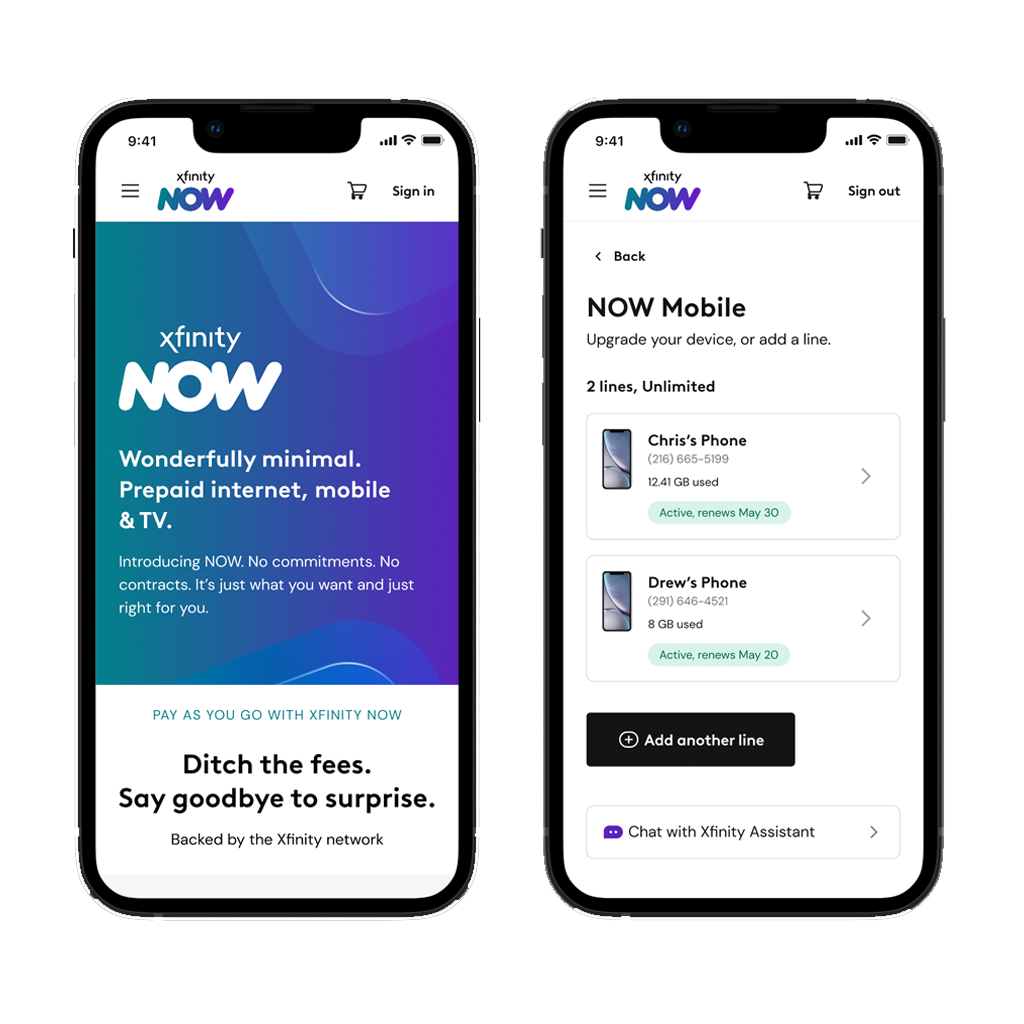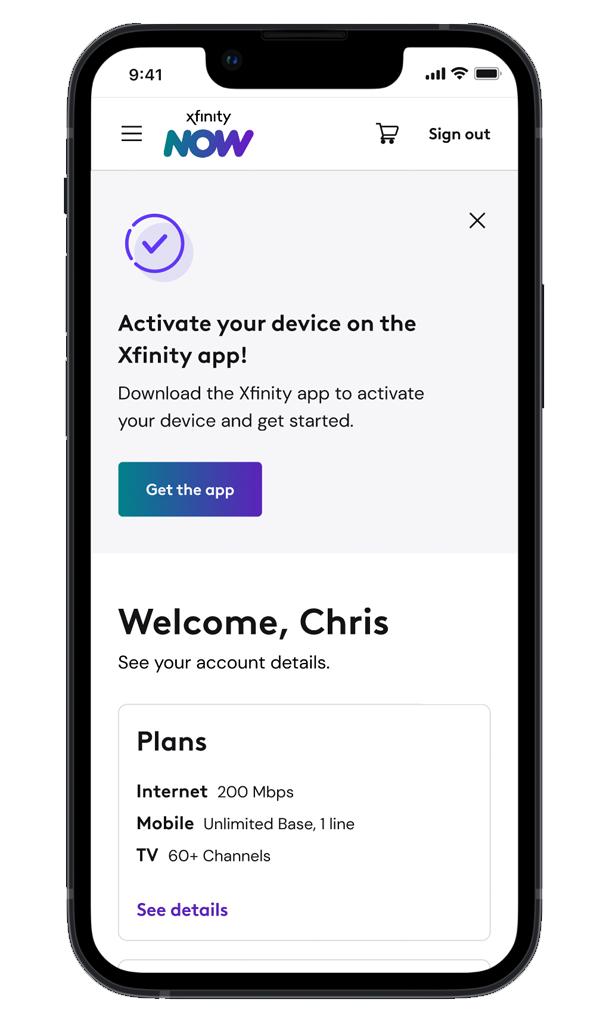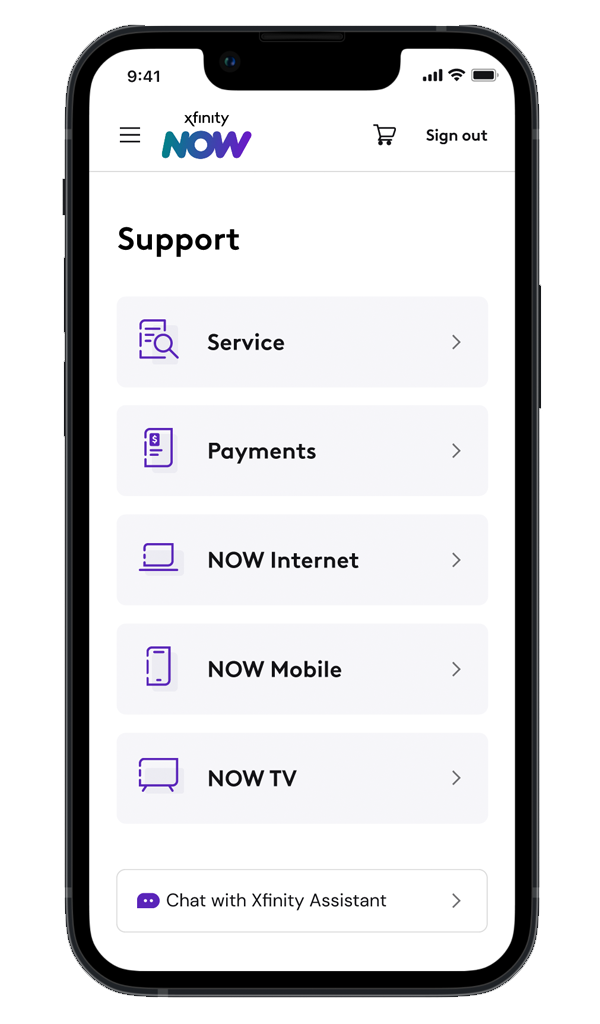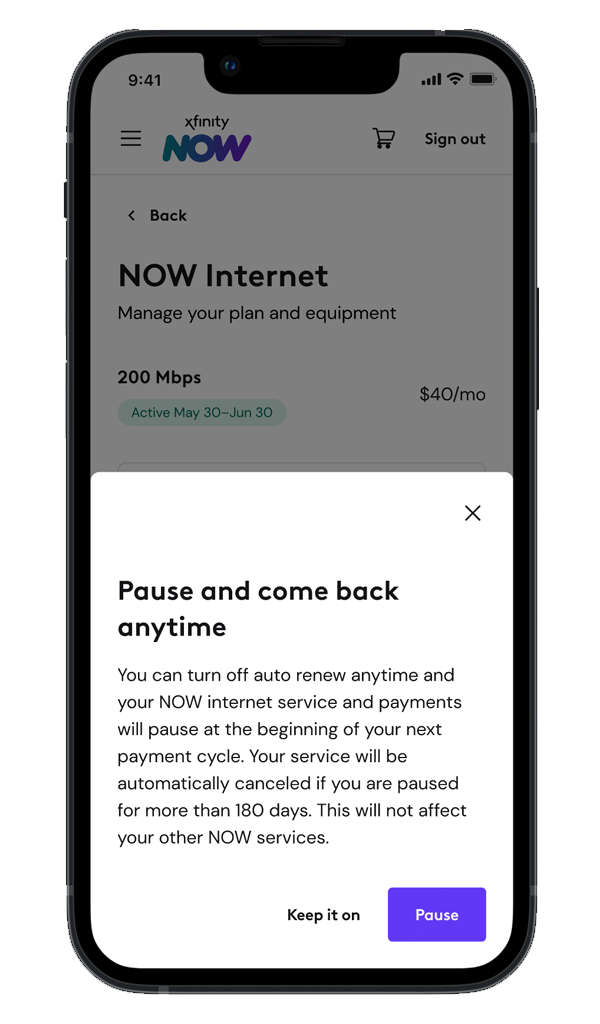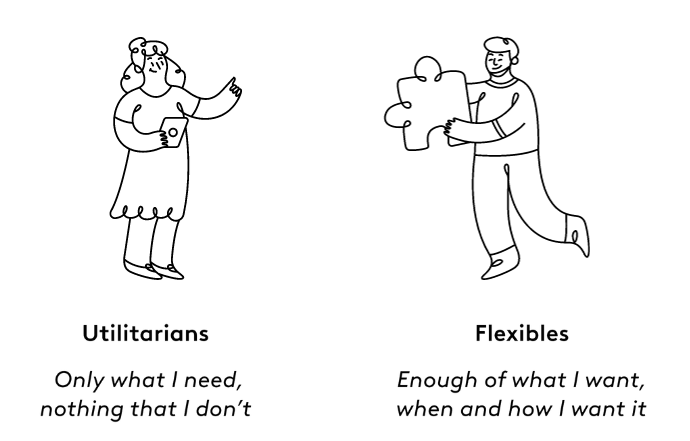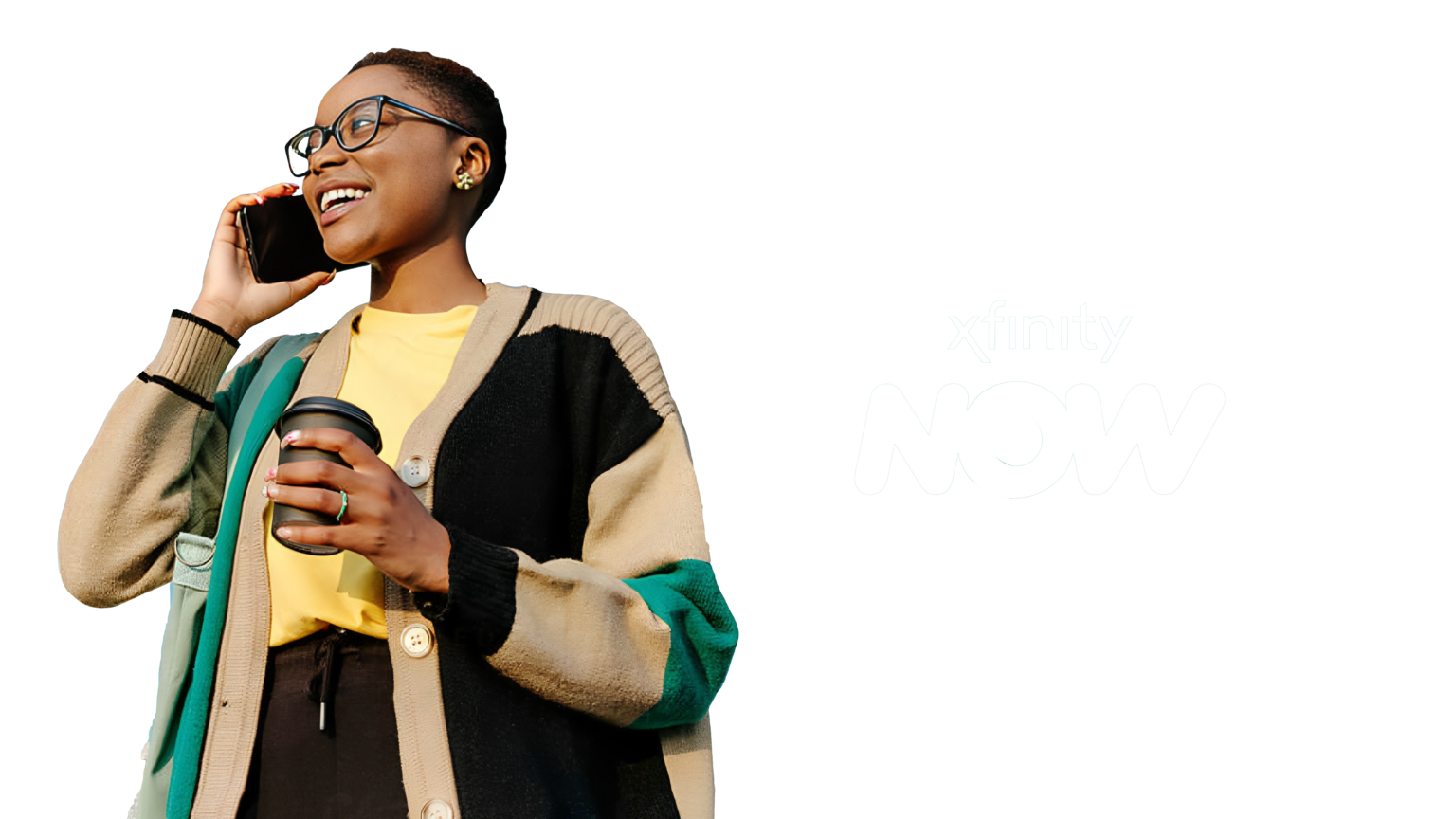
My Role:
As a member of the service design team, I focused on the user’s journey as it applied to account management, billing and support.
Key Responsibilities:
User flows, interaction design, low-fidelity wireframes, high-fidelity prototyping, stakeholder reviews and interdisciplinary collaboration with copywriters, conversation designers, and development team.

Team
Hezi Imbar – Lead Designer
Katie Blumberh – UX & UI
Cameron Arrington – UX & UI

Timeline
September 2023
Projected Launch 4/30/24
The Challenge
At Xfinity, the highest rate of churn comes from the income-constrained consumer. How might we design a new product catering to this user group?
By offering a lower priced product, how can we also reduce the cost to acquire and serve these consumers?
The Solution
Reduce customer churn by giving users the flexibility to pause or resume service at any time.
Reduce operating costs by empowering users to self-serve through unassisted channels when they are in need of support.
DISCOVER
What do income-constrained customers value most?
Among Xfinity internet users, 20% opt for competing prepaid mobile services, with 34% of these users belonging to the income-constrained demographic.
So, what does this demographic value?
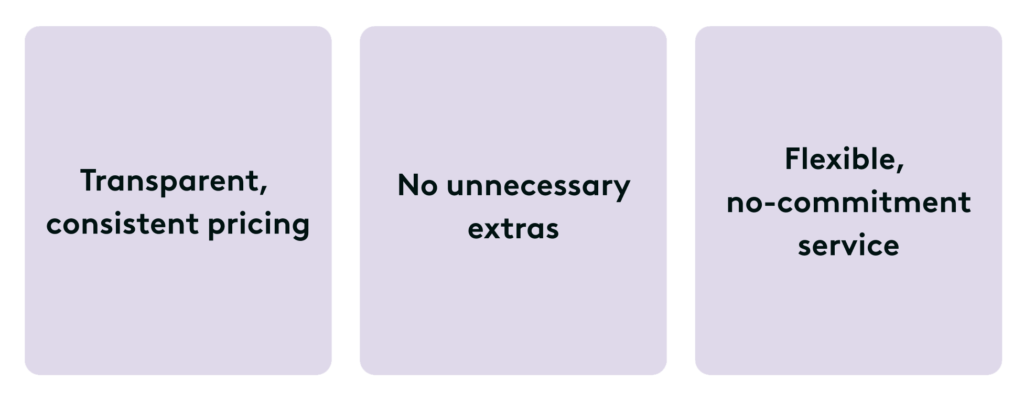
DESIGN
Providing flexibility
To provide a more flexible experience for NOW, we introduced a unique feature enabling customers to pause their service at any time
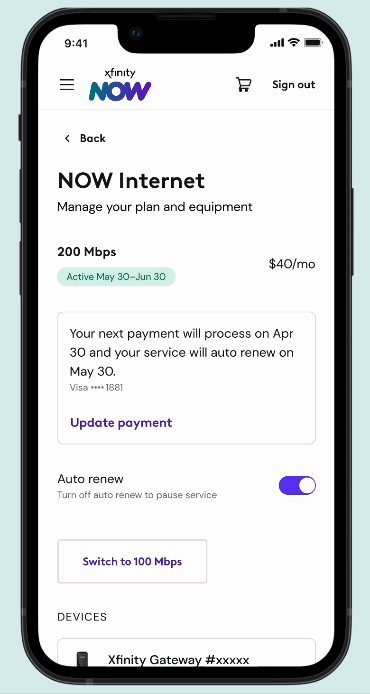
Empowering user control
To enhance transparency, we introduced a user-friendly toggle that empowers users to effortlessly activate or deactivate auto-renewal at their convenience.
A clear status indicator, displaying either ‘active’ or ‘paused,’ ensures instant visibility into their service status. For added simplicity, instructions on resuming service are conveniently provided under the payment details section
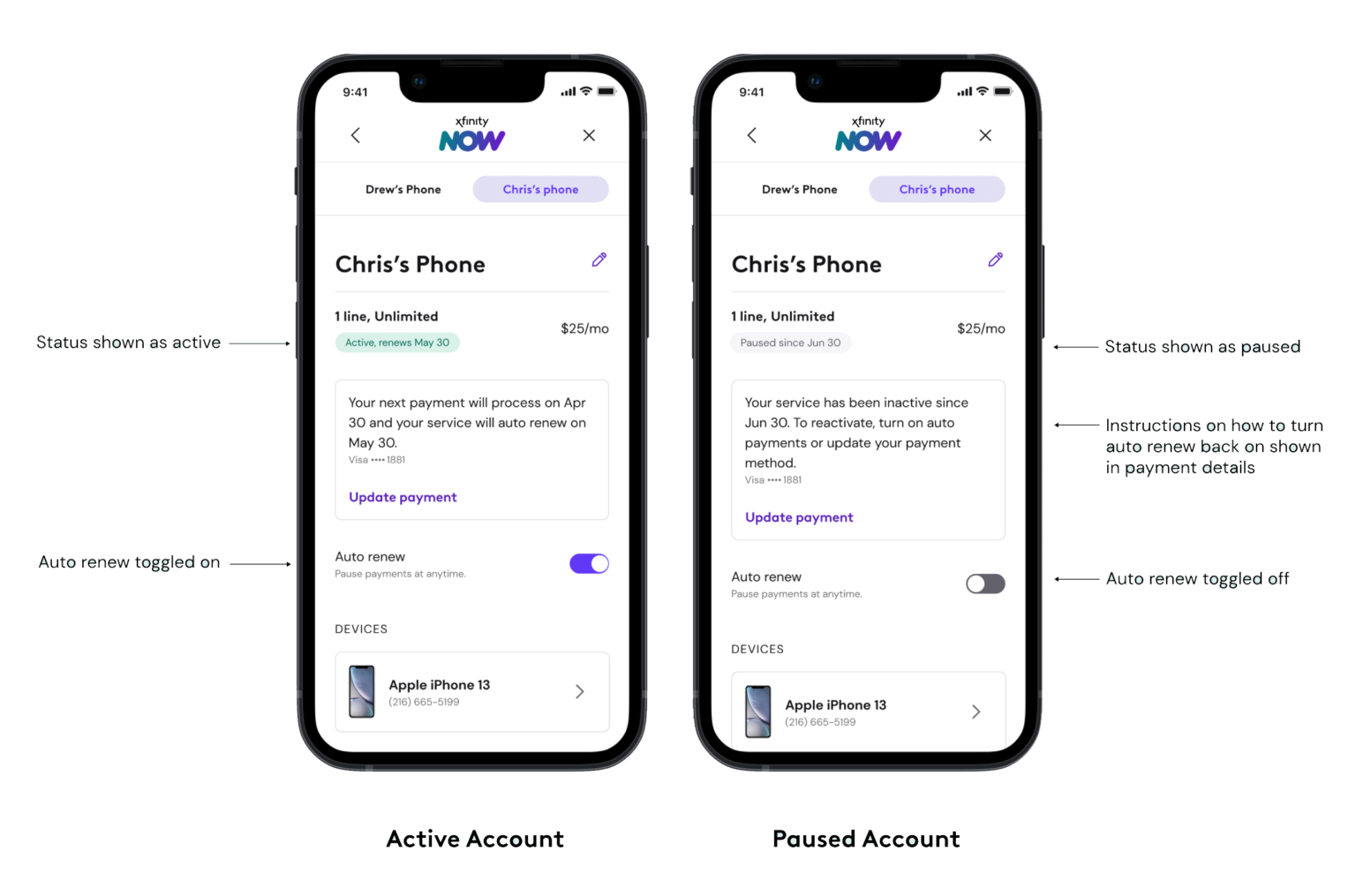
DESIGN
Reducing costs through AI-driven support channels
To complement NOW’s affordable prepaid product, cost efficiency was crucial. Empowering users for self-service support became a key strategy.
Through collaboration with our conversation design team, we established robust channels guiding users to the Xfinity Assistant, an AI chat solution.
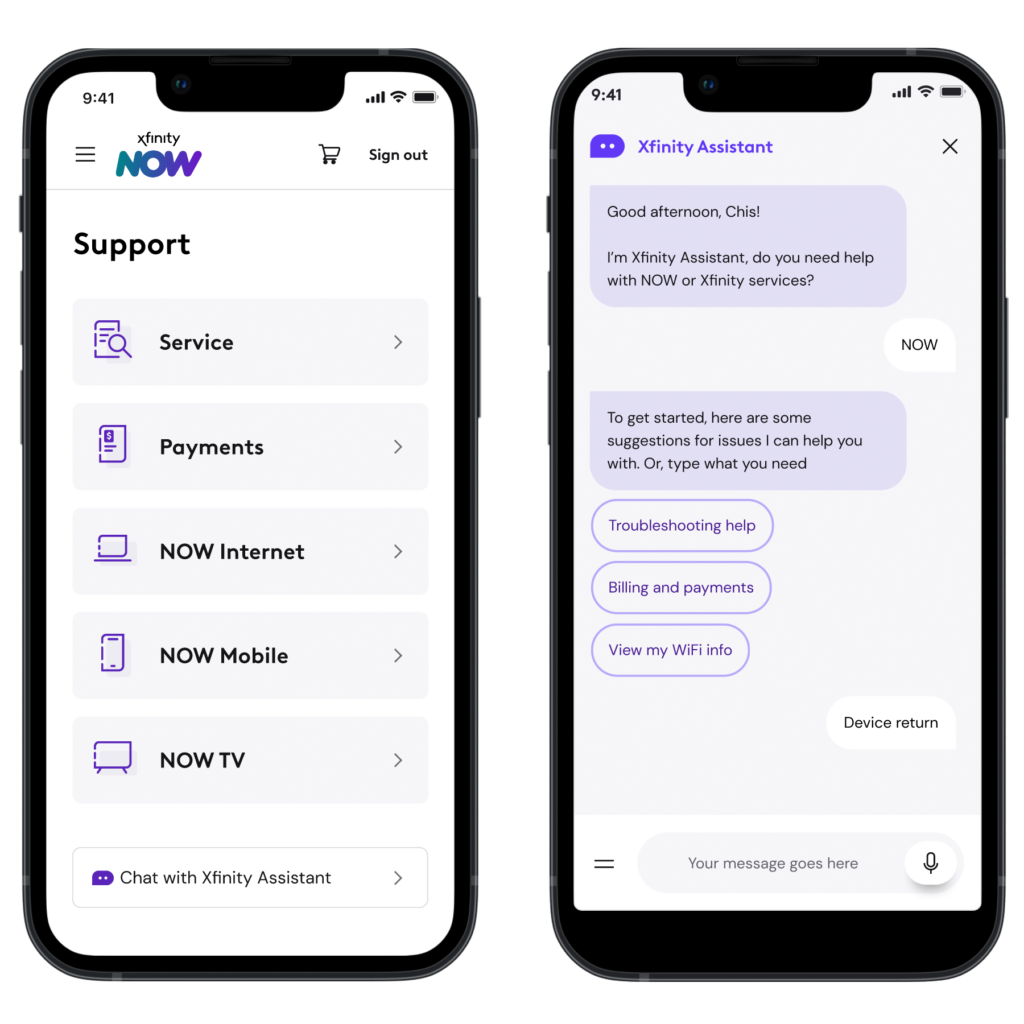
Straightforward, fee-free cancelations
This self-service strategy not only empowered users but also addressed a prevalent pain point for Xfinity customers: the need for a fee-free method to cancel their service without agent assistance.
The following unassisted leave flow not only reminded users of their ability to pause service anytime but also facilitated a hassle-free cancellation process with no repercussions if they chose to proceed.
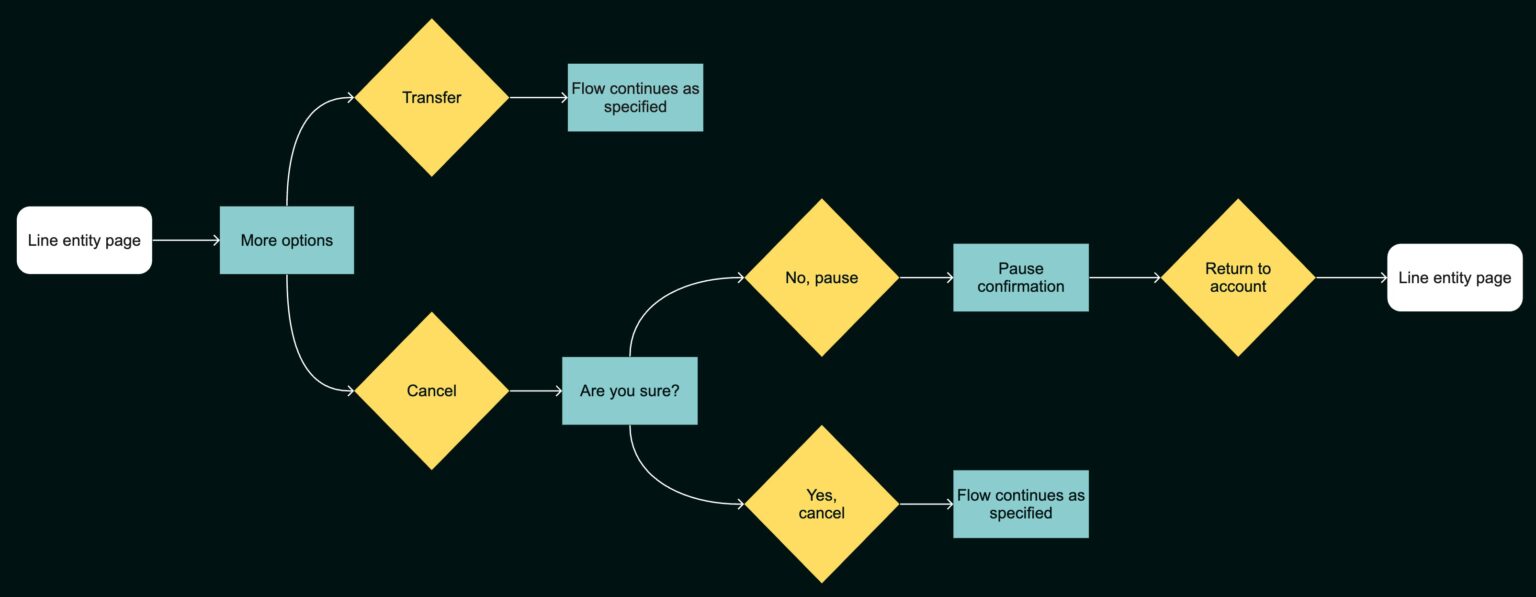
Conclusion
In meeting the challenge of serving the budget-conscious consumer and tackling high churn rates among Xfinity customers, NOW has successfully implemented strategic solutions focused on simplicity, flexibility, and cost-efficiency.
By empowering users to pause their service at any time and providing self-serve options through AI-assisted channels, NOW’s user-centric approach emphasizes transparency and customer empowerment.
NEXT STEPS:
Measuring success
Success will be measured by a decrease in customer churn, especially among the income constrained demographic. We will also measure support costs, and overall customer satisfaction.
Iteration
Results from the above will allow our team to prioritize and refine features for the next phase of design. These insights will guide us in enhancing user experience and ensuring that our product meets the evolving needs of our customers.
